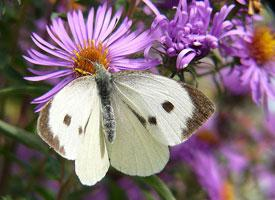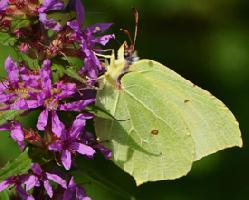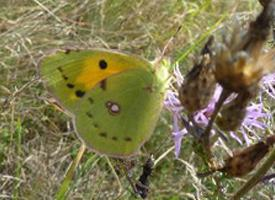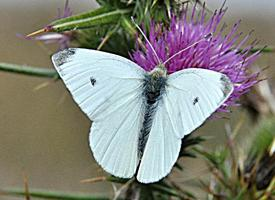
Váhy a míry
| Délka rozpětí křídel | od 5 do 6,5 cm |
|---|
Popis zvířete
The Large White, scientifically known as Pieris brassicae, is a prominent butterfly species that belongs to the family Pieridae, which is renowned for its relatively large size and striking appearance. This species is widely distributed across Europe, North Africa, and Asia and has been introduced to North America. It is one of the most recognizable and well-studied butterflies, primarily due to its agricultural importance as a pest on crops.Adult Large Whites exhibit a distinctive wing coloration that makes them easily identifiable. The wings are predominantly white, with the tips of the forewings marked by black patches. The females also display two black spots on each of their forewings, a feature that distinguishes them from the males, which either lack these spots or have them less prominently. The undersides of the wings are a pale yellow or greenish hue, providing excellent camouflage against predators when the butterfly is at rest with its wings closed. With a wingspan ranging from 5 to 6.5 centimeters, the Large White is considered one of the larger species within the white and yellow butterfly family.
The life cycle of the Large White, like that of many butterflies, is a fascinating journey through metamorphosis, consisting of four distinct stages: egg, larva (caterpillar), pupa (chrysalis), and adult. Females lay clusters of small, yellowish eggs on the underside of leaves, particularly favoring plants in the Brassicaceae family, such as cabbages, kale, and mustard. This preference for cruciferous vegetables has earned the species its status as a significant pest in agriculture.
Upon hatching, the larvae feed voraciously on their host plants, often causing extensive damage. The caterpillars are easily recognizable by their velvety green bodies adorned with faint yellow stripes and black spots. As they grow, they undergo several molts before reaching their final larval stage.
The transition from larva to adult is marked by the pupal stage, during which the caterpillar forms a chrysalis. This chrysalis is typically found attached to a plant stem or leaf and is a pale green or grey color, blending seamlessly with its surroundings. Inside, the remarkable process of metamorphosis takes place, transforming the caterpillar into a butterfly.
After emerging from the chrysalis, the adult Large White takes to the air, primarily feeding on nectar from flowers. Its flight period in temperate regions usually spans from spring to autumn, during which time it can produce multiple generations. The butterfly's migratory behavior allows it to exploit different habitats and resources, contributing to its wide distribution.
Despite its beauty and the fascination it holds for entomologists and butterfly enthusiasts, the Large White's reputation is marred by its larval stage's destructive impact on cultivated brassicas. Various control measures, including biological control by introducing natural predators and parasites, have been implemented to manage its populations.
In conclusion, the Large White butterfly is a species of great interest and importance. Its distinctive appearance, complex life cycle, and interactions with human agriculture make it a subject of continuous study and observation in the fields of entomology, ecology, and conservation.
Podobná zvířata
Nové fotografie zvířat
Top 10 zvířat
- Chinese water dragon (Physignathus cocincinus)
- Galápagos tortoise (Geochelone nigra complex)
- Dolphin gull (Leucophaeus scoresbii)
- Japanese macaque (Macaca fuscata)
- Colombian red howler (Alouatta seniculus)
- Sea urchins (Echinoidea)
- Moustached guenon (Cercopithecus cephus)
- Diana monkey (Cercopithecus diana)
- Common house mosquito (Culex pipiens)
- Colossal squid (Mesonychoteuthis hamiltoni)


